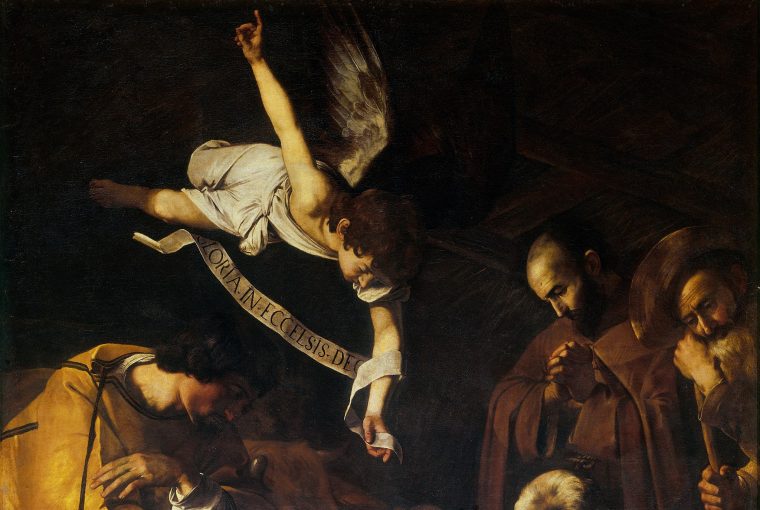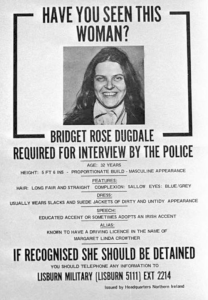Art Heists: When the Mafia Goes High Culture
A Caravaggio worth at least $20 million
In central Palermo amongst the cultural medley of architecture, lies the small 16th century Oratory of St Lawrence. Take a step inside this church and you’ll notice the abstractly designed marble floor, intricate side benches with ivory and mother-of-pearl inlaying, and countless expressive white sculptures depicting the lives of St Lawrence and St Francis. However, what your eye will immediately be drawn to is above the alter, standing at 2.7 metres high and two metres wide is The Nativity with St Francis and St Lawrence, a masterpiece painted by Caravaggio, estimated to be worth at least $20 million.
Except this painting isn’t the original, this is a hi-tech replica that was hung up in its place in 2015.
The real Caravaggio was stolen – hacked out of its frame with a razor blade on the night of October 17th, 1969. The work was so culturally important that the theft prompted the establishment of the world’s first dedicated art police unit, the Italian Carabinieri Division for the Protection of Cultural Heritage. This unit is now the largest and most effective art crime squad in the world, with over 300 full-time agents.
The closest we have come to recovering the original was in 1979, when Peter Watson, an investigative journalist, went undercover for the Carabinieri. He posed as a wealthy, corrupt art collector happy to deal in stolen art. The Carabinieri had learned that Sicilian mafia members were boasting of their possession of the painting, and Peter Watson was recruited to convince them to sell it to him.
Based on Watsons conversations with mafia representatives, he concluded that they were indeed in possession of the painting. However, he never physically saw the missing Caravaggio. Nor did they agree to sell it to him. They instead offered him other stolen artwork by Andrea del Sarto and a Bronzino, which were successfully recovered through this uncover operation.
As for the Caravaggio, it has not been seen since. Glimmers of hope arise every couple of years when people claim possible sightings, but alas, there has not been any solid leads. To this day, Caravaggio’s Nativity remains one of the FBI’s top 10 unsolved art crimes.
A Vermeer and 18 other paintings worth over £81 million
On the 27th of April, 1974, a dark-haired woman knocked on the door of Russborough House, a stately home situated in county Wicklow. The young woman, feigning a French accent, asked for assistance with her stalled car.
A typical gentleman, the man opened the door to assist her. It was then that three masked men armed with AK-47 assault rifles appeared and stormed the property, forcing the butler’s son to guide them to the library, where the elderly owners of the extravagant Victorian property, Sir Alfred Beit and Lady Clementine were listening to music. They were promptly bound and gagged by the intruders and Lady Clementine was dragged to the mansion’s basement.
Sir Alfred watched in horror as the young woman personally selected which painting were to be taken. Using screwdrivers, the gang pried a total of 19 paintings from their frames, including three Rubens, two Gainsboroughs, a Goya and a prized Vermeer. Within a mere ten minutes the thieves fled the house, loading the 19 paintings into their getaway vehicle, a silver Ford Cortina. The Butlers son managed to wiggle free shortly after they left and immediately phoned the police.
The stolen art was valued at £8 million, and at the time, was the greatest art theft in history. For those curious, this is a current day value of over £81 million.
“They have taken the cream,” – Sir Alfred, following the robbery.
The IRA sent out a ransom letter demanding the release of two prisoners (Dolours and Marion Price) in exchange for five of the paintings, and over £1 million for the remaining paintings, which the IRA would then use to purchase weapons.
The woman involved was Bridget Rose Dugdale, and she wasn’t just a pretty face being used as bait. Dugdale was a former debutante who rebelled against her wealthy English upbringing and decided to become a volunteer in the Provisional Irish Republican Army (the IRA) during the height of the Troubles in Northern Ireland. A well educated woman with a masters in philosophy and a PhD in economics, she was the mastermind behind the Russborough House heist.
Police suggested to the Gardaí (Irish police force) that they should check if anyone with a French accent had recently checked in at holiday accommodations throughout the country. Due to both political and civil unrest in 1970’s Ireland, tourists weren’t that common. Shockingly it was that simple. Only a week after the art heist two Gardaí questioned a farmer at the opposite end of the country in Co Cork, who told them that a French-speaking woman going by the name Mrs Merime, had recently checked into his wife’s cottage. Utilising what little information they had, the Gardaí began to keep watch of the cottage and the following day Dugdale returned and asked the farmer if she could borrow his car. When she returned she was surrounded and immediately arrested.
- The unbelievable story of how Reggie Kray broke Ronnie out of jail - April 18, 2023
- I Could Buy Drugs Online in Less Than 30 minutes - April 13, 2023
- Speak like a Sicilian Mafioso - April 1, 2023










